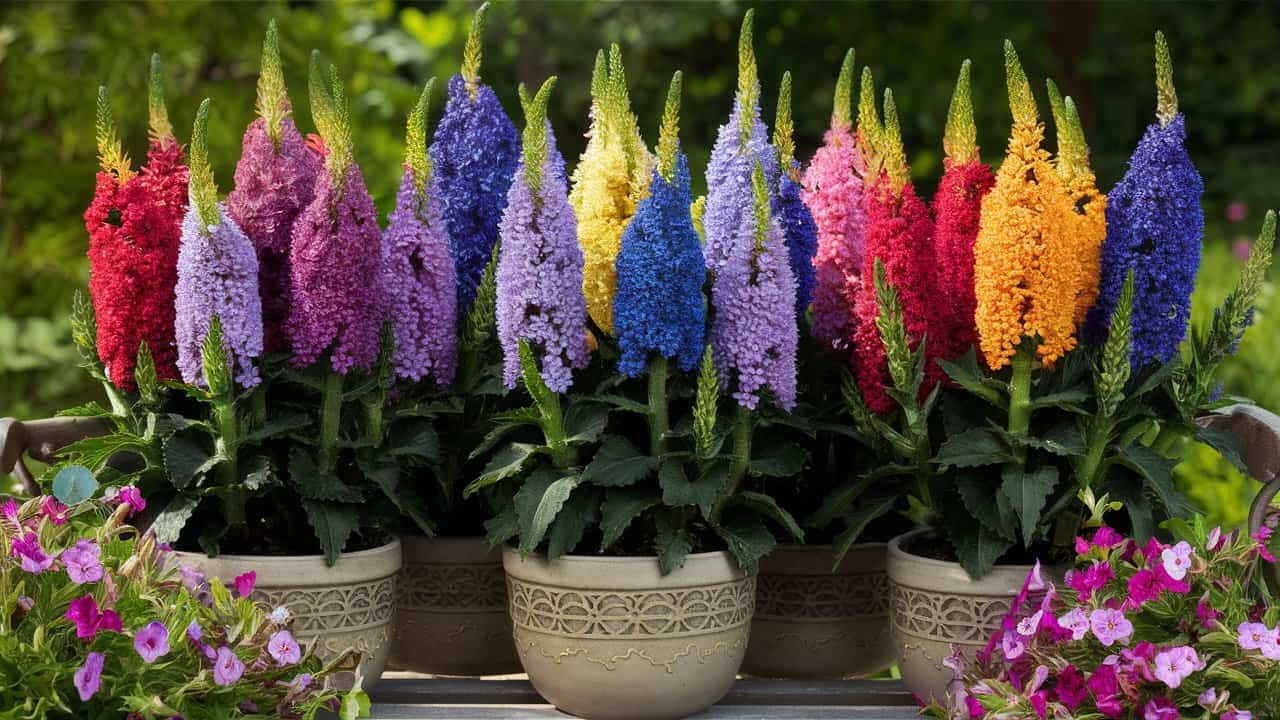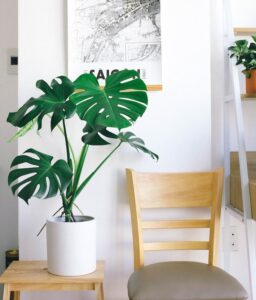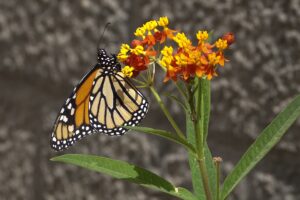Growing Angelonia in pots can be an immensely rewarding experience for both novice and seasoned gardeners. Also known as “Summer Snapdragon”, Angelonia is beloved for its vibrant blooms, easy care, and long blooming period. This guide will delve into everything you need to know about successfully growing Angelonia in pots, ensuring you enjoy these beautiful flowers to their fullest potential.
Understanding Angelonia
What is Angelonia?
Angelonia, botanically known as Angelonia angustifolia, belongs to the Plantaginaceae family. Native to Mexico and the West Indies, it is an herbaceous perennial often grown as an annual in cooler climates. These plants are admired for their spikes of small, snapdragon-like flowers that come in various colors including white, purple, pink, and blue.
Benefits of Growing Angelonia
Long Blooming Season: Angelonia plants typically bloom from late spring through the first frost.
Low Maintenance: Tolerant of heat and drought, making them an excellent choice for sunny locations.
Versatile Use: Can be used in garden beds, borders, and containers.
Pollinator Friendly: Attracts bees, butterflies, and other pollinators to your garden.
Selecting the Right Pot
Pot Size and Material
Size: Choose a pot that is at least 10-12 inches in diameter and of similar depth. Angelonia has a moderate root system that requires adequate space to grow.
Material: Clay, ceramic, plastic, or resin pots can all be used. Ensure the pot has drainage holes to prevent waterlogging, which can cause root rot.
Importance of Drainage
Proper drainage is crucial for healthy Angelonia plants. The pot should have several drainage holes at the bottom. To further enhance drainage:
Place a layer of gravel or broken pottery pieces at the bottom of the pot.
Use a well-draining potting mix.
Potting Soil Mix
Characteristics of an Ideal Soil Mix
Angelonia thrives in well-drained, fertile soil. A high-quality commercial potting mix with the following characteristics is ideal:
Lightweight: Prevents compaction and encourages root growth.
Well-draining: Reduces the risk of overwatering.
Nutrient-rich: Supports vigorous growth and blooming.
DIY Potting Mix Recipe
For those who prefer to make their own potting mix, here is a simple recipe:
2 parts peat moss
2 parts perlite or coarse sand
1 part compost or well-rotted manure
Planting Angelonia
When to Plant
Timing: Plant Angelonia in pots after the last frost date in your area. They thrive in warm temperatures and will not tolerate frost.
How to Plant
Prepare the Pot: Fill the pot with the potting mix, leaving about 1-2 inches below the rim.
Transplanting: If you are transplanting seedlings or nursery plants, gently remove them from their original containers, taking care not to damage the roots. Place the plant in the center of the pot.
Depth: Ensure the plant is at the same depth it was in its previous container. Backfill with potting mix around the root ball and lightly press down to eliminate air pockets.
Watering: Water thoroughly but ensure excess water drains out.
Caring for Angelonia
Watering
Angelonia plants prefer moderate watering:
Frequency: Water when the top 1-2 inches of soil feel dry to the touch.
Method: Water deeply, allowing the water to reach the root zone. Avoid overhead watering to prevent fungal diseases.
Fertilization
Regular feeding will encourage lush growth and abundant blooms:
Type: Use a balanced liquid fertilizer (e.g., 10-10-10) or a slow-release granular fertilizer.
Schedule: Fertilize every 4-6 weeks during the growing season. Follow the packaging instructions for application rates.
Pruning and Deadheading
Deadheading: Regularly remove spent blooms to promote continuous flowering.
Pruning: Lightly prune the plant to maintain its shape and encourage bushier growth. Cut back any leggy or overgrown stems.
Pest and Disease Management
Angelonia is generally pest-resistant, but occasional issues may arise:
Aphids and Spider Mites: Treat infestations with insecticidal soap or neem oil.
Fungal Diseases: Prevent with proper watering techniques and ensuring good air circulation. Remove and dispose of any affected plant material.
Bringing Plants Indoors
In regions with cold winters, Angelonia can be overwintered indoors:
Transition: Gradually acclimatize your Angelonia to indoor conditions by bringing it inside for a few hours each day, increasing the duration over a couple of weeks.
Location: Place the pot in a bright, sunny location where it can receive at least 6 hours of direct sunlight per day. A south-facing window is ideal.
Winter Care
Once indoors, maintain the plant with the following care tips:
Watering: Reduce watering frequency during the winter months. Allow the top inch of soil to dry out between waterings.
Temperature: Keep the indoor temperature between 60-70°F (15-21°C) and avoid placing the plant near drafts or heat sources.
Fertilization: Hold off on fertilizing during the winter as the plant’s growth will slow down.
Returning Outdoors
When the danger of frost has passed in the spring:
Re-Transition: Gradually re-acclimate the plant to outdoor conditions by placing it outside for a few hours each day, increasing the time over a 1-2 week period.
Inspect for Pests: Check for any pests or diseases before placing the plant back outdoors permanently.
Propagating Angelonia
Methods of Propagation
Angelonia can be propagated through seeds or cuttings, offering an easy way to expand your collection.
1. Seed Propagation
Seed Starting: Sow seeds indoors 6-8 weeks before the last frost date. Use a seed-starting mix and place the seeds on the surface, lightly pressing them into the soil.
Light Requirements: Ensure seeds receive bright, indirect light. Using a grow light can help provide consistent light conditions.
Germination: Maintain soil moisture and warmth (approximately 70°F or 21°C). Seeds should germinate within 10-14 days.
Transplanting: Once seedlings have developed a set of true leaves and the outdoor temperatures are warm enough, they can be transplanted to individual pots.
2. Cutting Propagation
Choosing Cuttings: Select healthy, non-flowering stems approximately 4-6 inches long.
Preparation: Remove the lower leaves and dip the cut end in rooting hormone powder.
Planting: Insert the cutting into a pot filled with a moistened potting mix or a mix of perlite and peat moss.
Environment: Keep the cutting in a warm, humid environment with indirect light. Covering with a plastic bag can help retain humidity.
Root Development: Roots should develop within 4-6 weeks. Once established, the new plants can be potted up individually.
Troubleshooting Common Issues
Nutrient Deficiencies
Symptom: Yellowing leaves, stunted growth, poor blooming.
Solution: Balance your fertilization routine and consider using a micronutrient supplement if deficiencies are suspected.
Overwatering
Symptom: Wilting, yellowing leaves, root rot.
Solution: Ensure proper drainage, reduce watering frequency, and allow the soil to dry between waterings.
Underwatering
Symptom: Wilting, dry soil, browning leaf tips.
Solution: Increase watering frequency, ensuring the soil remains consistently moist but not waterlogged.
Designing with Potted Angelonia
Aesthetic Pairings
Companion Plants: Pair Angelonia with other heat-loving annuals such as lantana, verbena, and marigolds for a vibrant display.
Color Schemes: Use complementary or contrasting colors to create visual interest. For example, mix purple Angelonia with yellow marigolds or white varieties with blue lobelia.
Container Arrangements
Solo Displays: Showcase a single variety of Angelonia in a striking pot to emphasize its beauty.
Mixed Containers: Combine Angelonia with trailing plants like ivy or sweet potato vine for added texture and dimension.
Conclusion
Growing Angelonia in pots offers a delightful way to add color and charm to your garden spaces, patios, or balconies. With the right care, soil, and environment, these resilient plants will reward you with a long season of beautiful, snapdragon-like blooms. Whether you are a seasoned gardener or a beginner, following the tips and techniques outlined in this guide will help you cultivate healthy, vibrant Angelonia plants that enhance your garden’s aesthetic appeal.





